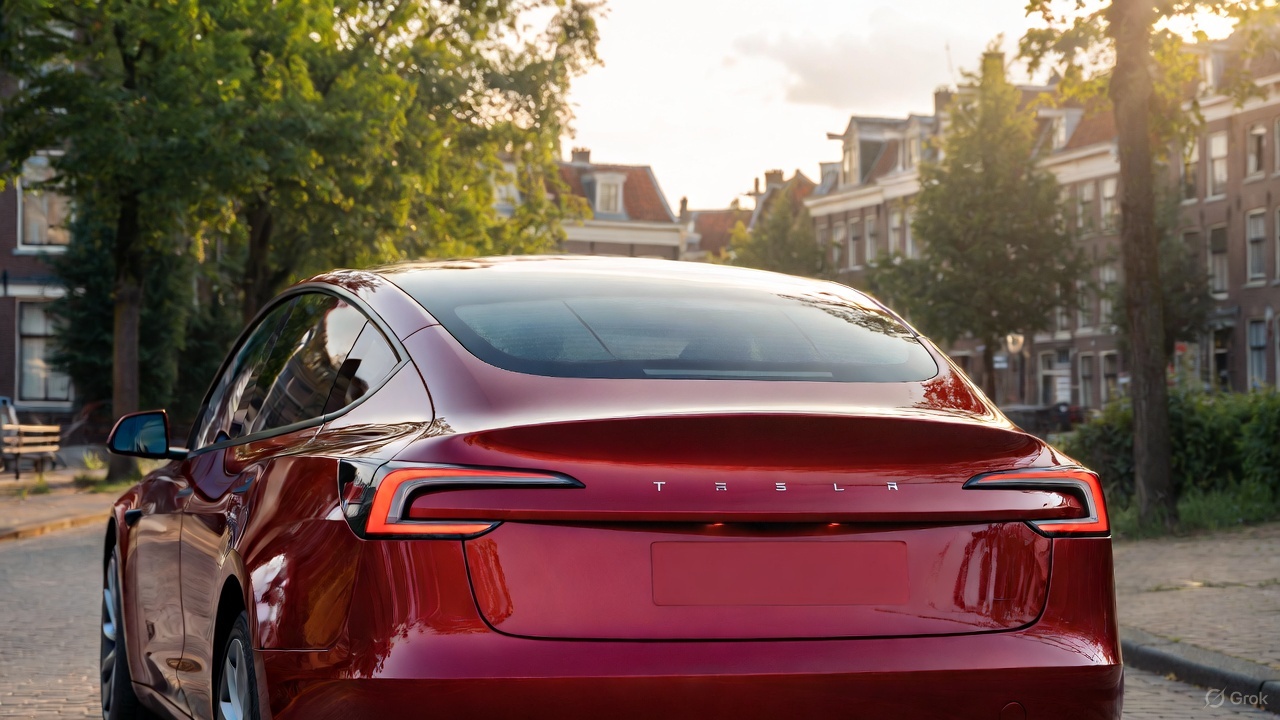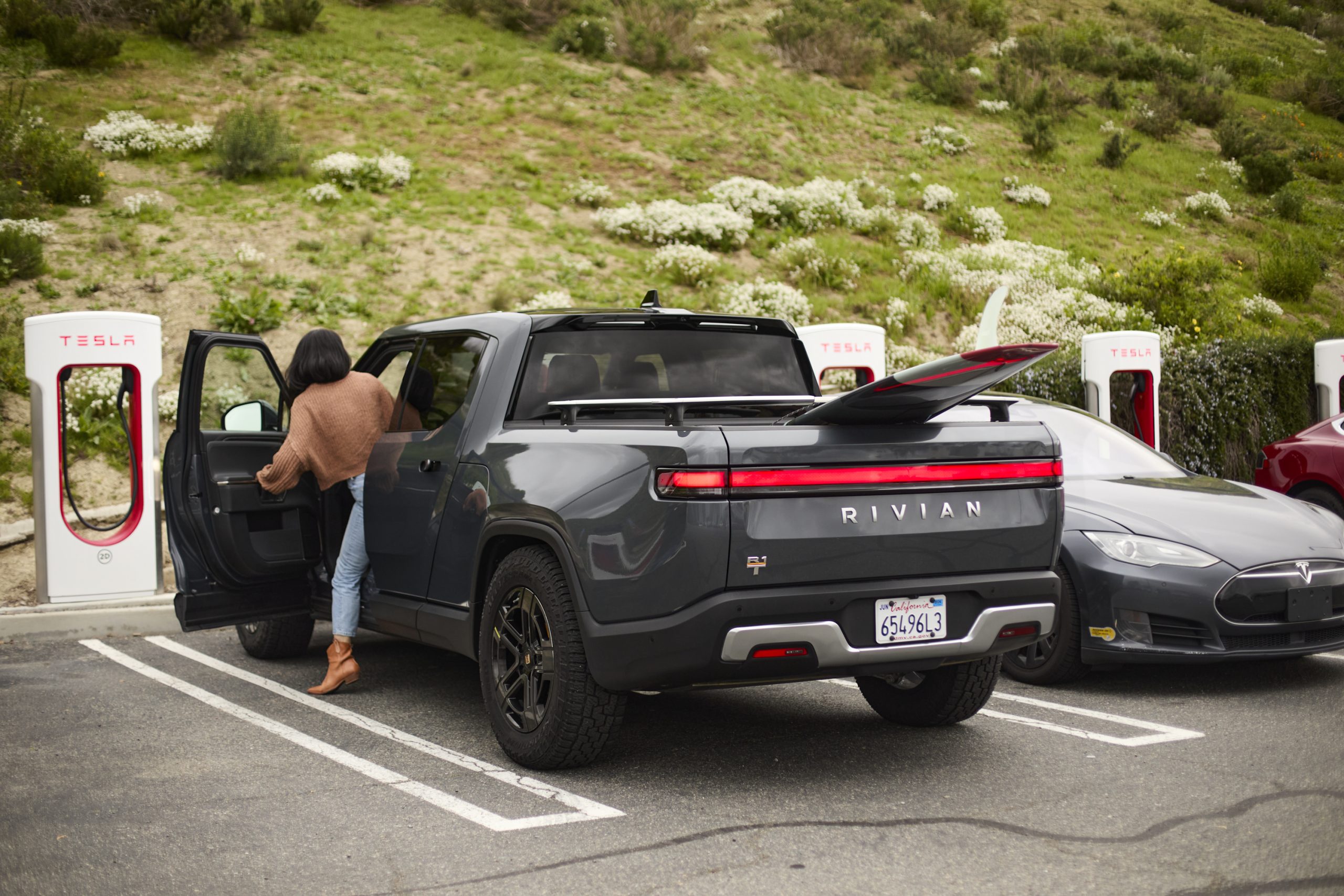Tesla has recently detailed some of the improvements it’s working on for the Supercharger network, especially as it has slowly been expanding access to the stations to electric vehicles (EVs) from other brands.
As Tesla has begun giving new non-Tesla EV brands access to the Supercharger network this year, many have also noticed how charging port placement on other vehicles can make it harder for short cables to reach—often requiring drivers to block other charging stalls to plug in.
However, in a post on X from the Tesla Charging account on Friday, the company has highlighted four things it’s aiming to improve for all EV owners, including a boost to the number of long charging cables at its Supercharger stations. In particular, Tesla says that within the next 18 months, it will have more long V4 Supercharger cables at stations than short ones, as it aims to start upgrading shorter cables to meet the needs of other EV brands.
In the post, Tesla outlines the following four goals it’s working on as it dives into improving the charging network:
- Making stall availability more accurate than ever
- Increasing the number of long Supercharging cables
- Modifying Supercharger stations to avoid blocking stalls
- Encouraging manufacturers to follow suit with charge port locations
Tesla makes it easier to find towing-compatible Superchargers
Tesla says that the latest software update makes stall availability estimates even more accurate, as the vehicle is now able to detect when EVs with a non-Tesla charge port location are plugged into a short-cable stall. This algorithm is set to continue improving over time, making it easier for drivers to get an accurate picture of how many stalls are available, as well as how many are blocked out by those needing to park unconventionally to reach.
The updated stall availability algorithm is a big improvement, with nearby refresh rates now every ~15 seconds. We know car types plugging in and mapped out Supercharger site layouts, to know which stall is not available at short cable sites. Your Tesla's touchscreen now shows… https://t.co/5PF7wruNhQ— Max de Zegher (@MdeZegher) November 22, 2024
In addition, Tesla says it has already modified over 1,500 Supercharger stations to make it so that EV drivers never have to utilize more than two charging spaces to charge, and it plans to continue working on updating sites going forward. Lastly, the company has gone directly to other EV manufacturers to encourage them to move charging ports to the rear left of their vehicles or to the front right, in order to maximize compatibility with the company’s Superchargers.
As one example in March, Tesla’s Lead Cybertruck Engineer Wes Morrill encouraged Rivian CEO RJ Scaringe to re-consider the location of the charging port for the upcoming R2 and R3 platforms, after prototype designs for the EVs were first unveiled and showed the port on the rear right instead. If Rivian wants to optimize for street parking as it appears to be doing, Morrill says that the company should move the port to the front right instead.
The company’s deployment of longer V4 Supercharging cables also follows the company’s debut of V4 charging cabinets earlier this month, effectively debuting faster charging speeds of up to 500kW. Companies like Ford, Rivian, General Motors (GM), and Nissan have already started gaining access to Tesla’s Supercharger network after adopting the company’s NACS last year, and Tesla will continue to widen access to the charging stations in the coming months and years.
What are your thoughts? Let me know at zach@teslarati.com, find me on X at @zacharyvisconti, or send us tips at tips@teslarati.com.
Ford to replace Tesla NACS adapters, warning of damaged charging ports

Elon Musk
Tesla CEO Elon Musk sends rivals dire warning about Full Self-Driving

Tesla CEO Elon Musk revealed today on the social media platform X that legacy automakers, such as Ford, General Motors, and Stellantis, do not want to license the company’s Full Self-Driving suite, at least not without a long list of their own terms.
“I’ve tried to warn them and even offered to license Tesla FSD, but they don’t want it! Crazy,” Musk said on X. “When legacy auto does occasionally reach out, they tepidly discuss implementing FSD for a tiny program in 5 years with unworkable requirements for Tesla, so pointless.”
I’ve tried to warn them and even offered to license Tesla FSD, but they don’t want it! Crazy …
When legacy auto does occasionally reach out, they tepidly discuss implementing FSD for a tiny program in 5 years with unworkable requirements for Tesla, so pointless. 🤷♂️
🦕 🦕
— Elon Musk (@elonmusk) November 24, 2025
Musk made the remark in response to a note we wrote about earlier today from Melius Research, in which analyst Rob Wertheimer said, “Our point is not that Tesla is at risk, it’s that everybody else is,” in terms of autonomy and self-driving development.
Wertheimer believes there are hundreds of billions of dollars in value headed toward Tesla’s way because of its prowess with FSD.
A few years ago, Musk first remarked that Tesla was in early talks with one legacy automaker regarding licensing Full Self-Driving for its vehicles. Tesla never confirmed which company it was, but given Musk’s ongoing talks with Ford CEO Jim Farley at the time, it seemed the Detroit-based automaker was the likely suspect.
Tesla’s Elon Musk reiterates FSD licensing offer for other automakers
Ford has been perhaps the most aggressive legacy automaker in terms of its EV efforts, but it recently scaled back its electric offensive due to profitability issues and weak demand. It simply was not making enough vehicles, nor selling the volume needed to turn a profit.
Musk truly believes that many of the companies that turn their backs on FSD now will suffer in the future, especially considering the increased chance it could be a parallel to what has happened with EV efforts for many of these companies.
Unfortunately, they got started too late and are now playing catch-up with Tesla, XPeng, BYD, and the other dominating forces in EVs across the globe.
News
Tesla backtracks on strange Nav feature after numerous complaints

Tesla is backtracking on a strange adjustment it made to its in-car Navigation feature after numerous complaints from owners convinced the company to make a change.
Tesla’s in-car Navigation is catered to its vehicles, as it routes Supercharging stops and preps your vehicle for charging with preconditioning. It is also very intuitive, and features other things like weather radar and a detailed map outlining points of interest.
However, a recent change to the Navigation by Tesla did not go unnoticed, and owners were really upset about it.
For trips that required multiple Supercharger stops, Tesla decided to implement a naming change, which did not show the city or state of each charging stop. Instead, it just showed the business where the Supercharger was located, giving many owners an unwelcome surprise.
However, Tesla’s Director of Supercharging, Max de Zegher, admitted the update was a “big mistake on our end,” and made a change that rolled out within 24 hours:
The naming change should have happened at once, instead of in 2 sequential steps. That was a big miss on our end. We do listen to the community and we do course-correct fast. The accelerated fix rolled out last night. The Tesla App is updated and most in-car touchscreens should…
— Max (@MdeZegher) November 20, 2025
The lack of a name for the city where a Supercharging stop would be made caused some confusion for owners in the short term. Some drivers argued that it was more difficult to make stops at some familiar locations that were special to them. Others were not too keen on not knowing where they were going to be along their trip.
Tesla was quick to scramble to resolve this issue, and it did a great job of rolling it out in an expedited manner, as de Zegher said that most in-car touch screens would notice the fix within one day of the change being rolled out.
Additionally, there will be even more improvements in December, as Tesla plans to show the common name/amenity below the site name as well, which will give people a better idea of what to expect when they arrive at a Supercharger.
News
Dutch regulator RDW confirms Tesla FSD February 2026 target
The regulator emphasized that safety, not public pressure, will decide whether FSD receives authorization for use in Europe.

The Dutch vehicle authority RDW responded to Tesla’s recent updates about its efforts to bring Full Self-Driving (Supervised) in Europe, confirming that February 2026 remains the target month for Tesla to demonstrate regulatory compliance.
While acknowledging the tentative schedule with Tesla, the regulator emphasized that safety, not public pressure, will decide whether FSD receives authorization for use in Europe.
RDW confirms 2026 target, warns Feb 2026 timeline is not guaranteed
In its response, which was posted on its official website, the RDW clarified that it does not disclose details about ongoing manufacturer applications due to competitive sensitivity. However, the agency confirmed that both parties have agreed on a February 2026 window during which Tesla is expected to show that FSD (Supervised) can meet required safety and compliance standards. Whether Tesla can satisfy those conditions within the timeline “remains to be seen,” RDW added.
RDW also directly addressed Tesla’s social media request encouraging drivers to contact the regulator to express support. While thanking those who already reached out, RDW asked the public to stop contacting them, noting these messages burden customer-service resources and have no influence on the approval process.
“In the message on X, Tesla calls on Tesla drivers to thank the RDW and to express their enthusiasm about this planning to us by contacting us. We thank everyone who has already done so, and would like to ask everyone not to contact us about this. It takes up unnecessary time for our customer service. Moreover, this will have no influence on whether or not the planning is met,” the RDW wrote.
The RDW shares insights on EU approval requirements
The RDW further outlined how new technology enters the European market when no existing legislation directly covers it. Under EU Regulation 2018/858, a manufacturer may seek an exemption for unregulated features such as advanced driver assistance systems. The process requires a Member State, in this case the Netherlands, to submit a formal request to the European Commission on the manufacturer’s behalf.
Approval then moves to a committee vote. A majority in favor would grant EU-wide authorization, allowing the technology across all Member States. If the vote fails, the exemption is valid only within the Netherlands, and individual countries must decide whether to accept it independently.
Before any exemption request can be filed, Tesla must complete a comprehensive type-approval process with the RDW, including controlled on-road testing. Provided that FSD Supervised passes these regulatory evaluations, the exemption could be submitted for broader EU consideration.










